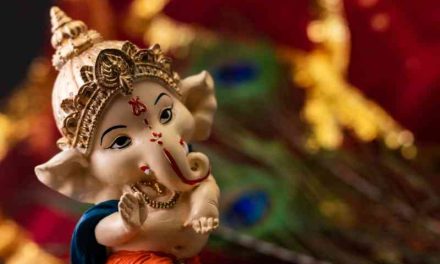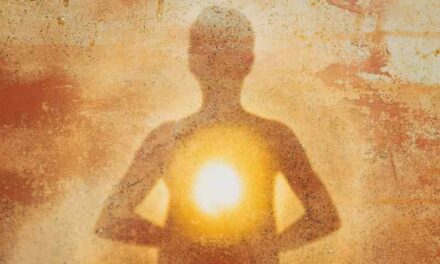We analyze the complete collection of Vedic scriptures covering all aspects of the Hinduism. Many people think Hinduism is only related to going to temples and worshipping, but this is only the basic level of understanding. If you can master all the Hindu scriptures , you become a master in all aspects of your life.
Why are Vedic Texts different from the Puranic Stories?
From any standpoint, anything may be correct or incorrect, helpful or ineffective – skilled or ineffective, beneficial or detrimental.
The Puranas are “commentaries” on the Vedas, and their purpose is to simplify the Vedic teachings via tales, myths, and instructional stories – they are intended for the ordinary people who are unfamiliar with Vedanta’s higher philosophy and metaphysics. They are subsidiary scriptures and have no authority apart from the Vedanta.
As a result, it is preferable to go from the Puranas to the learning of Vedanta.
All deities are expressions of various parts of Consciousness and the Psyche, and all deities and the 14 realms (lokas) are contained inside us.
The dictum is yath brahma tath pia – what is true of the macrocosm is true of the microcosm.
The human body is a microcosm of the universe, permeated with Divine Consciousness. The same Divine Consciousness pervades the Universe.
THE VEDAS
- The rig-veda The most important of the Vedas is a collection of Illuminating Hymns of Wisdom known as sktas or Mantras made of Riks (ric, rik, or rig—verse) addressed to the Devas or Gods. These hymns verbalize the sages’ or Riis’ mystical experiences while in intense stages of concentration.
- Sama-veda — texts of Harmonious Joyful Chants or Samans intended to be chanted to certain tunes. A recast of the Rig-Veda divided into sections and structured for chanting during the different Vedic sacrifices.
- Yajur veda — literature pertaining to Sacrificial Rites or Yajus (yajur), or the proper ordaining of conduct. It is composed mostly of prayers and invocations for the consecration of the utensils and materials used in sacrificial ritual, but also serves as a metaphor for the ways by which man attains divinity. This Veda is split into two sections, referred to as ‘The White’ and ‘The Black’.
- Atharva-veda — holy scriptures containing mystical formulas and chants to be utilized at certain rituals such as weddings, births, and funerals, as well as formulae meant to combat the influence of karmic illnesses and chaotic energies.
Each of these Vedic scriptures is subdivided into the following four sections:
- suktas or mantras – Psalms of praise in verse
- brahmanas – Prose works on Vedic ritual, including tales, myths, explanations, religion, philosophy, and folklore.
- aranyakas – treatises on philosophical and theological issues related to the Brahmanas and intended for study by forest ascetics.
- Upanisads – Poems and prose treatises on spiritual, religious, and intellectual matters.
Significant Upanishads
Aitareya, Kauśitaki, Taittiriya, Kaṭha, Maitri, Bṛhadaraṇyaka, Śvetāśvatara , Īśa, Chāṇḍogya, Keṇa, Tālavakra, Muṇḍaka, Māṇḍukya, Praśna.
Minor Upaniṣads
Ātma-bodha, Nāda-bindu, Nārāyaṇa, Sarva-sāra, Amṛta-bindu, Tejo-bindu, Skanda, Śārīrikā, Garbha, Kali-santarana, Yoga-tattva, Amṛta-nāda, Varāha, Yoga-kuṇḍali, Muktika, Nirālamba, Paingala, Adhyātma, Subala, Tāra-sāra, Bhikṣuka, Haṃsa, Maṇḍala-brahmaṇa, Maitreya, Vajra-sūci, Dhyāna-bindu, Nārada-parivrājaka, Śaṇḍilya.
UPA VEDAS
āyur-Veda — Scripture dealing with medicine .
dhanur Veda — Scripture dealing with archery.
śastra-śāstra — Scripture dealing with martial arts.
gāndharva-Veda — Scripture of music.
sthāpatya-Veda — Scripture of architecture .
śilpa-śāstra — Scripture of fine arts .
GRIHYA SUTRAS – which deal with the rules and regulations for domestic rites and ceremonies, named after their authors:
Aśvalayana, Kauṣitaki, Śankhāyana, Baudhāyana, Āpastamba, Hiraṇyakeśin, Bhāradvāja, Satyasadha, Vaikhānasa, Parāśkara, Gobhila, Khadira, Jaimini, Kauśika.
DHARMA SHASTRAS — Legal treatises
Identical as the preceding writers with the addition of Manu.
IMPORTANT PURANAS
Viṣṇu, Bhāgavata, Padma, Nāradiya, Garuḍa, Varāha Matsya, Liṅga, Skanda, Kūrma, Śiva, Agni Brahmā, Brahma-vaivarta, Vāmana, Brahmaṇḍa, Mārkaṇḍeya, Bhaviṣya.
TANTRAS
Mahanirvāṇa Tantra, Prapañcasāra Tantra, Brahma Yāmala Tantra, Kulārṇava Tantra, Tantrarāja Tantra, Viṣṇu Yāmala Tantra, Kulasāra Tantra, Rudra Yāmala Tantra, Todala Tantra
AGAMAS
Śaiva āgama:– sūkṣma, kāmika, yogarāja, cintya, kāraṇa, ajita, dīpta, sahasra, aṁśumat and suprabheda.
Rudra āgama:— vijaya, nihśvāsa, svayambhūva, anala, vīra, raurava, makuṭha, vimala, candrajñāna, mukhabhimbha, prodgīta, lalita, sidda, santāna, śarvokta, pārameśvara, kiraṇa and vātula
Pañcarātra āgama:— īśvara saṁhita, parama saṁhita, bṛihad brahma saṁhita, pauṣkara saṁhita, sāttvata saṁhita, jñānāmṛtasāra saṁhita, agastya saṁhita, aniruddha saṁhita, ahirbhudnya saṁhita, kapiñjala saṁhita, kāśyapa saṁhita, jayākhya saṁhita, jñānāmṛtasāra saṁhita, nāradīya saṁhita, paramapuruṣa saṁhita, parāśara saṁhita, pādma saṁhita, pārameśvara saṁhita, puruṣottama pauṣkara bhāradvāja, mārkaṇḍeya, lakṣmī tantra, viśvamitra viṣṇu-tilaka, viṣṇu, viṣvaksena, śāṇḍilya, śeṣa, śrīpraśṇa saṁhita, sanatkumāra & hayaśīrśa samhita4.
ITIHASA
Rāmāyana
Mahābhārata (including Bhagavad Gita which is a snapshot of all the Vedic scriptures)
Yoga-Vasiṣṭha — A poem by Vālmiki of 32,000 ślokas dealing with deep practical mysticism and lofty philosophical thought and literary beauty. It has been called the ‘crest-jewel’ of Vedānta works. It is the inner Spiritual Story of Rama.
Harivaṁśa — a remake of the stories of Kṛiṣhṇa and His pastimes. One of the most read Vedic scriptures.
HUMANITIES AND SOCIAL SCIENCES
- Kama-sutra – A treatise on Eugenics and Erotics by the sage Vatsyayana.
- Artha-sastra — Kauhilya’s work on the science of Polity, which deals with economics and politics.
- Brihatsamhita – A work by Varhamihira on a variety of scientific subjects, astronomy, and astrology, among others.
- Niti sastra — Ethical Scripture: literature that discusses wise and moral behavior, political knowledge, moral philosophy, and precepts (n—to lead, guide). The most notable of them are Canakya Pandit’s sayings.
- Jataka Mala = ‘Garland of Birth-Stories,’ referring to the Buddha’s many earthly incarnations.
- Panca-Tantra – ‘Five Books’ of moral fables produced for the purpose of teaching young princes in proper behavior.
- Hitopadesa = ‘Book of Good Counsel’: a compilation of animal stories imparting wise counsel to rulers (hita-upadea—wise counsel). Many of Aesop’s stories were borrowed from this source. Other collections include Kemendra’s Vehla-pacaviati, ‘A Demon’s 25 Stories,’ and Bhat-kath-majar, or Somadeva’s Kath-sarit-sgara, the ‘Ocean of Rivers of Stories.’





